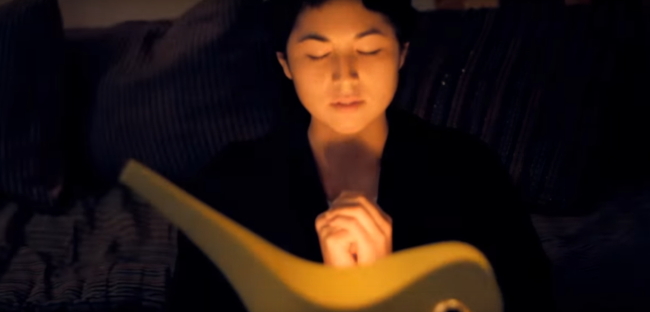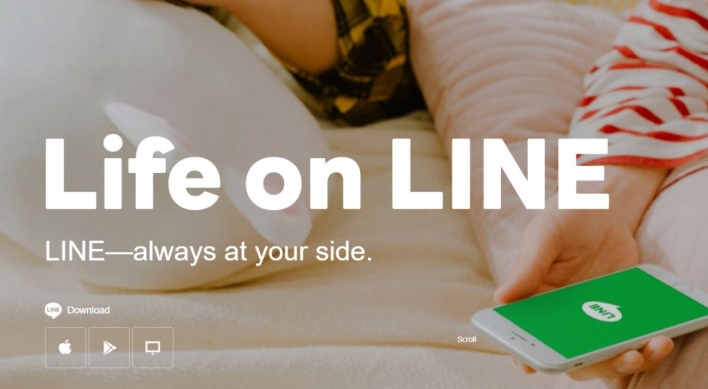[Eye Interview] Head full of dreams, feet on the ground
Vania Heymann’s work may feature people swimming in the sky, but the music video director is rooted in reality
By Rumy DooPublished : Dec. 2, 2016 - 17:24
The music video for British rock band Coldplay’s track “Up & Up,” released last year from the album “A Head Full of Dreams,” has been described as “magical.”
The video features a montage of moving images that transform the everyday into extraordinary scenes. Synchronized swimmers dance inside a teacup, while a green kitchen sponge becomes a football field for tiny players. Popcorn is popped from the crater of a volcano. The sky is the sea; the earth becomes a stage.
Music video director Vania Heymann, the creator of the clip, had been inspired by simple paper collages.
“I really like making surrealistic collages with everyday images from magazines,” Heymann told The Korea Herald on Wednesday during his visit to Seoul to participate in the “Contents Insight” seminar hosted by the Korea Creative Content Agency. The ideas were devised with fellow music video director Gal Muggia.
“We thought it would be interesting to do it in a video -- a collage for the sake of collage, not just an additional effect to help tell a story. Every shot would be disconnected from the other shot, but also connected.”
The alternative rock song “Up & Up” felt “very optimistic,” Heymann said. “It has a very global feeling. Uplifting. So we wanted to do something global, where you see different people from around the world -- walls, refugees, political problems. But at the same we wanted it to be completely out of this world, a surrealistic environment.
“You finish watching the video and you feel like the world is full of bad stuff, and yet it’s all magical.”
The video features a montage of moving images that transform the everyday into extraordinary scenes. Synchronized swimmers dance inside a teacup, while a green kitchen sponge becomes a football field for tiny players. Popcorn is popped from the crater of a volcano. The sky is the sea; the earth becomes a stage.
Music video director Vania Heymann, the creator of the clip, had been inspired by simple paper collages.
“I really like making surrealistic collages with everyday images from magazines,” Heymann told The Korea Herald on Wednesday during his visit to Seoul to participate in the “Contents Insight” seminar hosted by the Korea Creative Content Agency. The ideas were devised with fellow music video director Gal Muggia.
“We thought it would be interesting to do it in a video -- a collage for the sake of collage, not just an additional effect to help tell a story. Every shot would be disconnected from the other shot, but also connected.”
The alternative rock song “Up & Up” felt “very optimistic,” Heymann said. “It has a very global feeling. Uplifting. So we wanted to do something global, where you see different people from around the world -- walls, refugees, political problems. But at the same we wanted it to be completely out of this world, a surrealistic environment.
“You finish watching the video and you feel like the world is full of bad stuff, and yet it’s all magical.”

It was not the first time the 30-year-old Israeli artist had collaborated on creative projects with world-class musicians.
In 2013, Heymann created an interactive music video for Bob Dylan’s 1965 song “Like a Rolling Stone,” infusing the decades-old song with technology. The video acts as a television, allowing viewers to flip through different “channels” featuring characters in a number of settings -- a romantic comedy, a newsroom and a tennis tournament -- all lip-synching to Dylan’s song.
Heymann worked on another interactive video for CeeLo Green’s song “Robin Williams.” In the clip, the song’s lyrics are typed into Google’s search engine, which generates results -- images, shopping sites, articles -- for each word.
“I think I have this concept that repeats itself in several videos,” he said. “(The videos) seem to take an existing platform -- television, Google search engine, etc. -- and try to put in a music video that uses that medium.”
Heymann’s experiments with new media, video and art developed to new heights in college and grabbed attention online. Born to French parents, Heymann grew up in Jerusalem and studied visual communications at the Bezalel Academy of Art and Design.
Videos he created as homework assignments while at school went viral on YouTube and Vimeo. One such clip, titled “Crazy Watering Can,” depicts an IKEA watering can as a religious symbol. People worship the can, bowing down to it and engraving it on their skin. Viewers found it both whimsical and profound, interpreting it as a question on the nature of religion.

After dropping out of school, Heymann continued to pursue new visual concepts in videos, especially through the use of technology.
“I really like technical challenges,” he said. “If there’s a big challenge it means it will hopefully be something special. Not something people have done millions of times -- what’s the point of doing something like that?”
But the director says that unlike his ideas, his creative process is not so romantic.
“Usually, my ideas come from stress, like having a deadline,” he replied when asked on his main sources of inspiration.
“It’s amazing how I can go on vacation and I will come up with nothing. ... But when I have a strict deadline, I’ll come up with something, whether it’s (by) looking through a car window or talking to people on a bench. It always comes in different ways, but it’s always right before the deadline,” he remarked, laughing. “It’s not very romantic to say, but it’s work.”

And despite the recognition he has come to gain through his videos, most of his ideas are still on the shelf, waiting to be realized, he noted.
“A lot of my pitches get a bad response,” said the director. “Most of the projects I worked on didn’t happen. I guess I come from a very specific place with a very strong concept. ... But if you want to be unique, you need to come from a different place.”
He is still passionate about his craft, believing that music video-filming is the “ultimate art form.”
“It’s not as long as a (feature) film, and it’s not as limited in structure, either,” said Heymann. “It combines music, art, film, everything.”
Heymann says his first trip to Korea has been full of interesting revelations on social interactions. One day, he hopes to film a video capturing the customs specific to each culture and how they shape people.
“My parents are French -- every time they meet a new person they give two kisses. In Israel, you give a hug. Here, you bow. ... It’s interesting to think about how people in different places interact with each other.”
By Rumy Doo (doo@heraldcorp.com)








![[Hello India] Hyundai Motor vows to boost 'clean mobility' in India](http://res.heraldm.com/phpwas/restmb_idxmake.php?idx=644&simg=/content/image/2024/04/25/20240425050672_0.jpg&u=)









